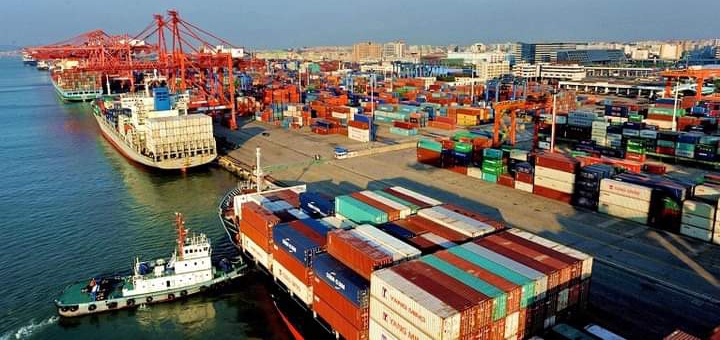Shanghai Port Becomes First Seaport To Attain 50 Million TEUs , With 350 International Shipping Services
Shanghai port has become the world’s first port to achieve an annual container throughput of 50 million Twenty Foot Equivalent Units TEUs in 2024, thus strengthening its position as the world’s busiest container port for 15 consecutive years.
The continuous growth of container volume highlights Shanghai Port’s status as a world-class shipping hub. The Shanghai International Shipping Center has ranked in the top three of the global shipping centres for five consecutive years.
Currently, Shanghai Port is served by nearly 350 international shipping services, connecting over 700 ports in more than 200 countries and regions, with the port connectivity ranking first globally for 13 years in a row. Its Yangshan port has topped the Global Container Port Performance Index (CPPI) for two consecutive years.
In 2024, Shanghai Port’s international transhipment volume grew by more than 20% year-on-year, with annual transhipment expected to exceed 7 milion teu.
- Advertisement -
Shanghai port has deepened regional cooperation, partnering with 22 ports along the Yangtze River, including 16 ports in the Yangtze River Delta, strengthening synergies of port and shipping logistics between the home port and its hinterland.
Furthermore, the continuous improvement of the port’s collection and distribution system has been robustly driving the container throughput growth. The water-to-water transhipment ratio at Shanghai Port is expected to reach 60%, a historic high.
Shanghai Port’s container terminals are now fully equipped with shore power facilities, significantly increasing shore power usage, with estimated growth of 250% in ship calls and 200% in energy savings by the end of 2024. To date, Shanghai Port has completed 125 bonded LNG bunkering operations for international vessels, with a total bunkering volume of 730,000 cubic meters.
Shanghai port will continue to strengthen cooperation across the port and shipping industry chain, accelerate the enhancement of high-end shipping services, and optimize the allocation of global shipping resources.
It will also build a clean energy bunkering hub at Shanghai port, promoting the clustering of functions and the expansion of capacity at the Shanghai International Shipping Center, according to Shanghai International Port Group.




Comments are closed.